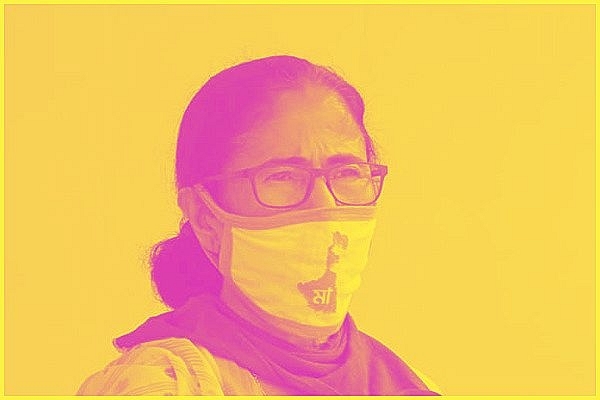Politics
How Mamata Banerjee’s Populism Could Deal A Body Blow To Private Healthcare In Bengal
- Trinamool supremo wants private hospitals to offer treatment, including complicated surgeries, at a fraction of their current costs.
- In a pre-poll gimmick, the Bengal government has also extended the free health insurance scheme with a cover of Rs five lakh per annum to all residents of the state irrespective of their economic status.

West Bengal Chief Minister Mamata Banerjee (Facebook)
Bengal chief minister Mamata Banerjee’s much-vaunted Swasthya Sathi (health insurance scheme) may not only fail to live up to public expectations about free and quality healthcare for all in the state, it could also deal a blow to the private healthcare sector in Bengal.
That’s because the Trinamool supremo wants private hospitals to offer treatment, including complicated surgeries, at a fraction of their current costs.
Private hospitals say that the overly low cost of treatments under Swasthya Sathi are completely non-viable, and do not cover even a part of their operating costs and will leave them deeply in the red.
In a pre-poll gimmick that has compounded the hopeless situation, the Bengal government has extended the free health insurance scheme with a cover of Rs five lakh per annum to all residents of the state irrespective of their economic status.
Also, all private hospitals and nursing homes across the state have been ordered to get themselves empanelled under the state and have been warned that they will lose their clinical establishment licences (provided by the state government) if they fail to do so.
This effectively means that any resident of Bengal can avail free secondary and tertiary healthcare up to Rs five lakh a year at any private healthcare facility in the state.
The chief minister last week lashed out at private hospitals who are refusing patients under the state government scheme which was rolled out in February 2017. She reiterated that she would cancel the licences of errant private hospitals if they refuse patients.
Private hospitals have reached out to the state government and voiced their serious concerns about the low rates of treatment and surgeries under the scheme.
Representatives of the Association of Hospitals of Eastern India (AHEI) met senior state officials, including chief secretary Alapan Bandopadhyay, and pointed out that the rates of treatment were too low.
AHEI president Rupak Barua said they told the state officials in unequivocal terms that private hospitals and even small nursing homes won’t be able to provide services to Swasthya Sathi patients at the government-prescribed rates.
“We have high overheads and don’t compromise on quality of infrastructure and services. Our facilities are much better than even the top government hospitals and we have to pay our doctors also much more than what the government does. And unlike government hospitals, we constantly upgrade our infrastructure and facilities,” said the chief executive of a major private hospital in Kolkata who did not want to be named.
Private hospitals say that over the past four years, they have been cross-subsidising the cost of treating patients under the state scheme.
But that is only possible if the number of Swasthya Sathi patients is low. “Ideally, cross-subsidisation works if the number of patients under the state scheme is limited to just five percent of the total number of patients in a hospital,” said Peerless Hospital CEWO Sudipta Mitra.
But with the state government extending the scheme to all and sundry irrespective of their incomes and economic status, and with a huge number of residents of the state enrolling themselves under the scheme, private hospitals fear a huge rush of patients.
“Why should anyone pay for treatment or surgery if he can get it for free under the Swasthya Sathi scheme? Since hospitals cannot refuse patients under the scheme, a majority of the patients in private hospitals will soon be Swasthya Sathi ones who the hospitals will have to extend treatment to at a fraction of their usual rates,” said the CEO of a premier private hospital.
And once this happens, he said, private hospitals will go into the red and will have to shut down. “There is no way any private hospital or nursing home can sustain itself for even a couple of months if it has to offer treatment to more than five percent of patients at Swasthya Sathi rates,” he said.
AHEI representatives have raised the issue of the ridiculously low rates of treatment under the state scheme and asked the government for an upward revision of rates by at least 75 per cent immediately.
But state officials told them that a rate revision cannot happen till the middle of this year. That is, till the ensuing assembly polls are over.
While that is too late, there is also no way that the cash-strapped Bengal government can revise the rates of treatment under its insurance scheme. And more so since it has now rolled it out to all residents of the state as a pre-poll populist measure.
Mamata Banerjee’s populism will, thus, deal a blow to private healthcare facilities in the state.
This will be a double whammy for residents of Bengal since government hospitals are in a terrible shape and are avoided by all except the desperately poor.
Introducing ElectionsHQ + 50 Ground Reports Project
The 2024 elections might seem easy to guess, but there are some important questions that shouldn't be missed.
Do freebies still sway voters? Do people prioritise infrastructure when voting? How will Punjab vote?
The answers to these questions provide great insights into where we, as a country, are headed in the years to come.
Swarajya is starting a project with an aim to do 50 solid ground stories and a smart commentary service on WhatsApp, a one-of-a-kind. We'd love your support during this election season.
Click below to contribute.
Latest